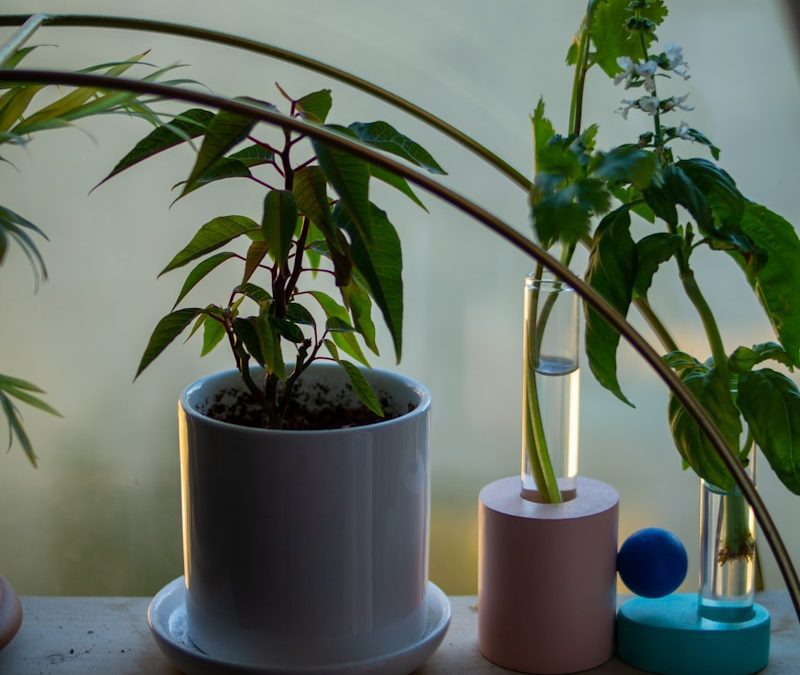Contents
- 1 How to Propagate Houseplants: Grow New Plants for Free
- 1.1 What is Houseplant Propagation?
- 1.2 Why Propagate Houseplants?
- 1.3 Easiest Houseplants to Propagate
- 1.4 How to Propagate Houseplants from Stem Cuttings
- 1.5 Propagating Houseplants by Division
- 1.6 Houseplants to Propagate from Leaf Cuttings
- 1.7 Aftercare Tips
- 1.8 Common Mistakes to Avoid When You Propagate Houseplants
- 1.9 Frequently Asked Questions
- 1.10 Recommended Product
- 1.11 Outbound Resource
- 1.12 Final Thoughts
How to Propagate Houseplants: Grow New Plants for Free
Imagine having a home full of beautiful plants — without spending any extra money. With houseplant propagation, you can turn one plant into many and share them with friends or expand your indoor jungle for free.
In this complete guide, we’ll cover how to propagate houseplants, including the easiest methods, best plants to start with, and helpful care tips for healthy new growth. Whether you’re a beginner or an experienced gardener, you’ll find it satisfying and fun to grow new plants at home.
What is Houseplant Propagation?
Propagation is the process of creating new plants from an existing one. There are several ways to do it, but most indoor gardeners rely on stem cuttings, leaf cuttings, or division. It’s a fun and rewarding way to multiply your collection and learn more about plant growth.
Why Propagate Houseplants?
- Save money: Create new plants without buying more.
- Control growth: Rejuvenate leggy or overgrown plants.
- Share with friends: Give plant babies as gifts.
- Expand your collection: Fill your home with more green for free.
- Boost confidence: Watching your new cuttings thrive is extremely rewarding.
- Sustainable living: Reduce waste by making the most of what you have.
Easiest Houseplants to Propagate
- Pothos: Fast-growing and roots easily in water.
- Spider plant: Produces “pups” that can be snipped and replanted.
- Snake plant: Leaf cuttings can grow new shoots.
- Monstera: Nodes on stem cuttings develop strong roots.
- ZZ plant: Can be propagated with leaf or stem cuttings.
- Philodendron: Very forgiving and roots quickly in water or soil.
- Peperomia: Grows well from leaf or stem cuttings and makes cute mini plants.
How to Propagate Houseplants from Stem Cuttings
- Choose a healthy stem: Look for one with at least two nodes.
- Cut below a node: Use sharp, sterilized scissors or a clean blade.
- Remove lower leaves: Leave a few leaves at the top for photosynthesis.
- Place in water or moist soil: If using water, change it every few days to keep it fresh.
- Wait for roots to grow: Usually takes 2–4 weeks depending on the plant.
- Plant in soil: Once roots are a few inches long and sturdy enough.
Propagating Houseplants by Division
Plants like peace lilies, ferns, and snake plants can be divided:
- Remove the plant from its pot carefully to avoid root damage.
- Gently separate root clumps or rhizomes by hand or with a clean knife.
- Replant sections into new pots with fresh soil, water lightly, and keep in indirect light until established.
Houseplants to Propagate from Leaf Cuttings
Some plants, like succulents and snake plants, can grow new plants from leaf cuttings:
- Cut a healthy leaf with a clean blade.
- Let it dry for a day or two to form a callous and prevent rot.
- Place in well-draining soil, just deep enough to stand upright.
- Mist lightly every few days until roots and new growth appear.
Aftercare Tips
- Humidity: Young cuttings prefer higher humidity; use a plastic cover, humidity dome, or place them in a bathroom with filtered light.
- Light: Bright, indirect light is ideal to avoid scorching new growth.
- Watering: Keep soil lightly moist but never soggy. Too much water can lead to rot.
- Patience: Some cuttings take a month or more to establish roots, so don’t rush the process.
- Gradual acclimation: Once rooted, gradually expose new plants to more sunlight before moving them to their final spots.
Common Mistakes to Avoid When You Propagate Houseplants
- Using dirty tools: Always sterilize scissors or blades to prevent disease.
- Overwatering: Excess water can suffocate roots or cause fungal infections.
- Skipping light: Without light, new roots won’t develop strong enough for potting up.
- Disturbing too early: Let roots develop fully before moving to a permanent pot.
- Over-fertilizing: Avoid feeding new cuttings until they show new growth.
Frequently Asked Questions
How long does it take to propagate a houseplant? Most cuttings take 2–4 weeks to develop roots, but some slower varieties can take over a month.
Can I propagate houseplants all year round? Yes, but spring and summer are best because plants are actively growing and rooting faster.
Do I need rooting hormone? It’s optional. Many houseplants root just fine without it, but using it can speed up the process and increase success rates.
Why are my cuttings wilting? They may lack humidity or have too much direct light. Try misting more and adjusting their location.
Recommended Product
Outbound Resource
Learn more about propagation methods in this guide from the RHS.
Final Thoughts
Propagating houseplants is a fun, affordable, and eco-friendly way to expand your indoor garden. It helps you save money, understand your plants better, and share the joy of gardening with others.
Whether you’re propagating your first pothos or dividing an overgrown peace lily, you’ll find that the process brings a new sense of connection to your indoor jungle. Start today, and watch your plant family grow one cutting at a time!

